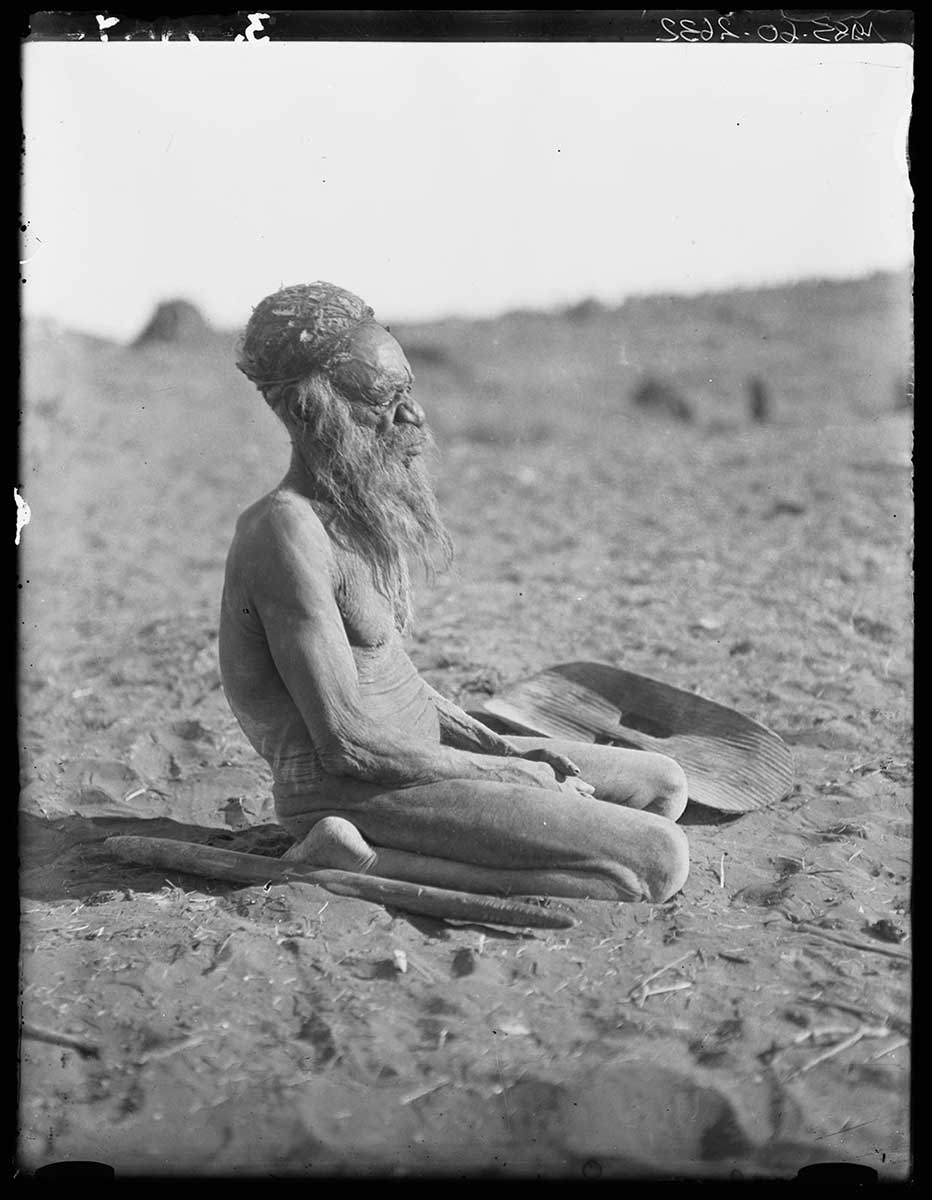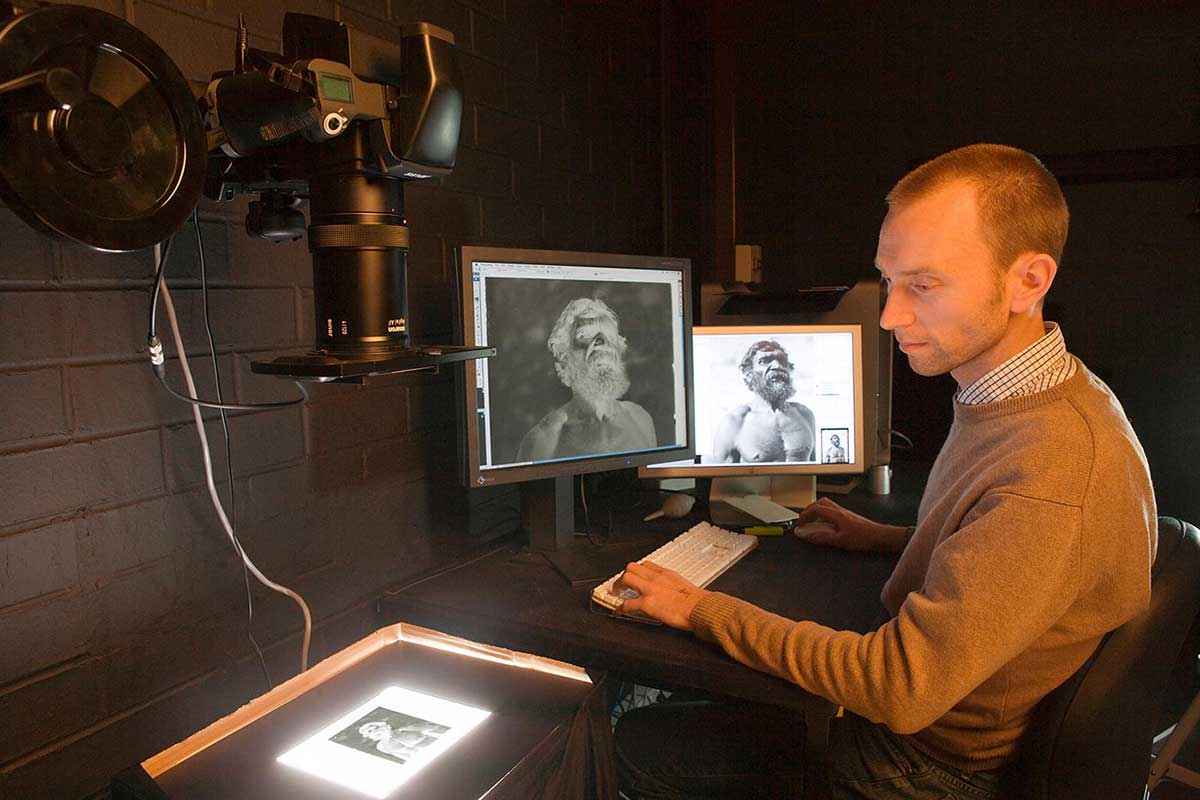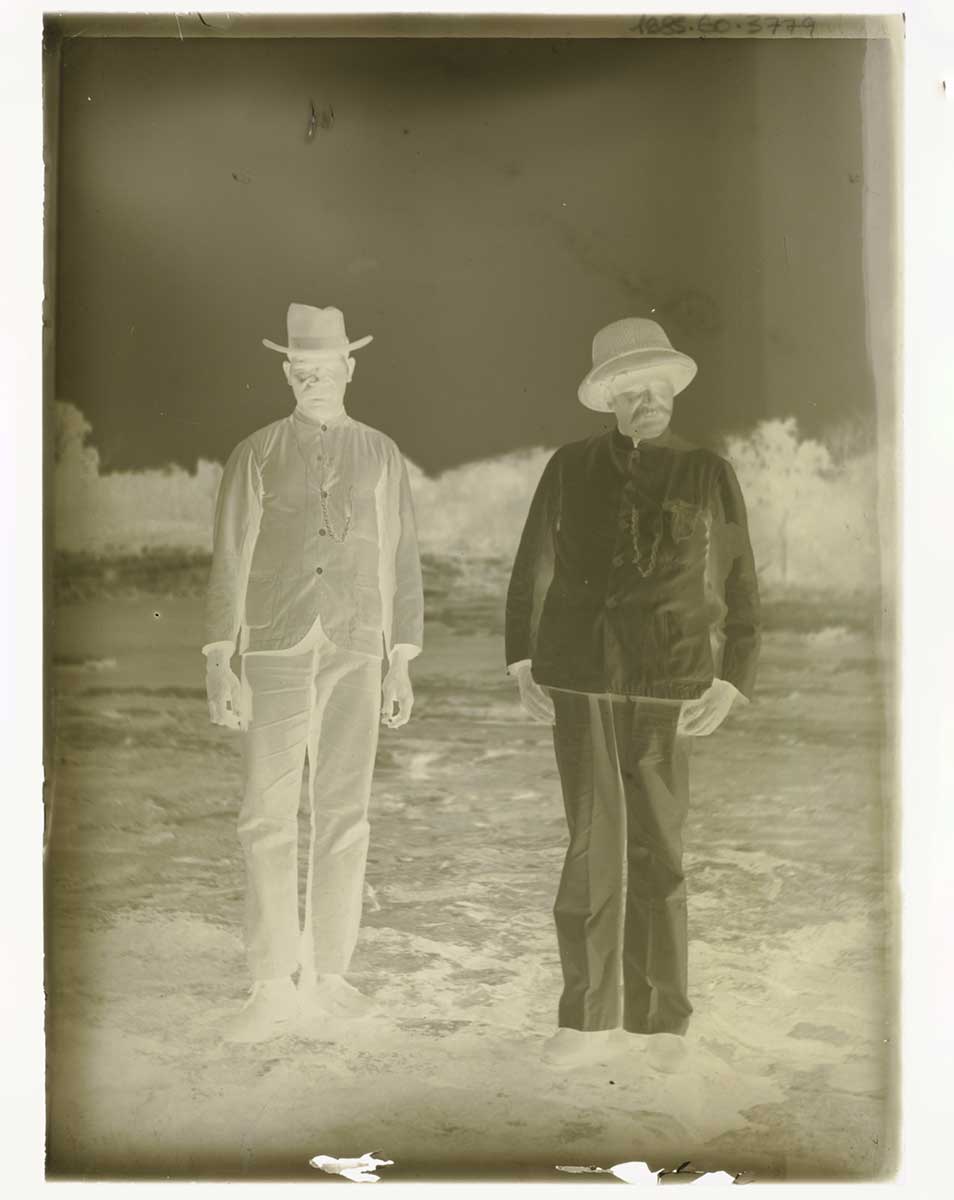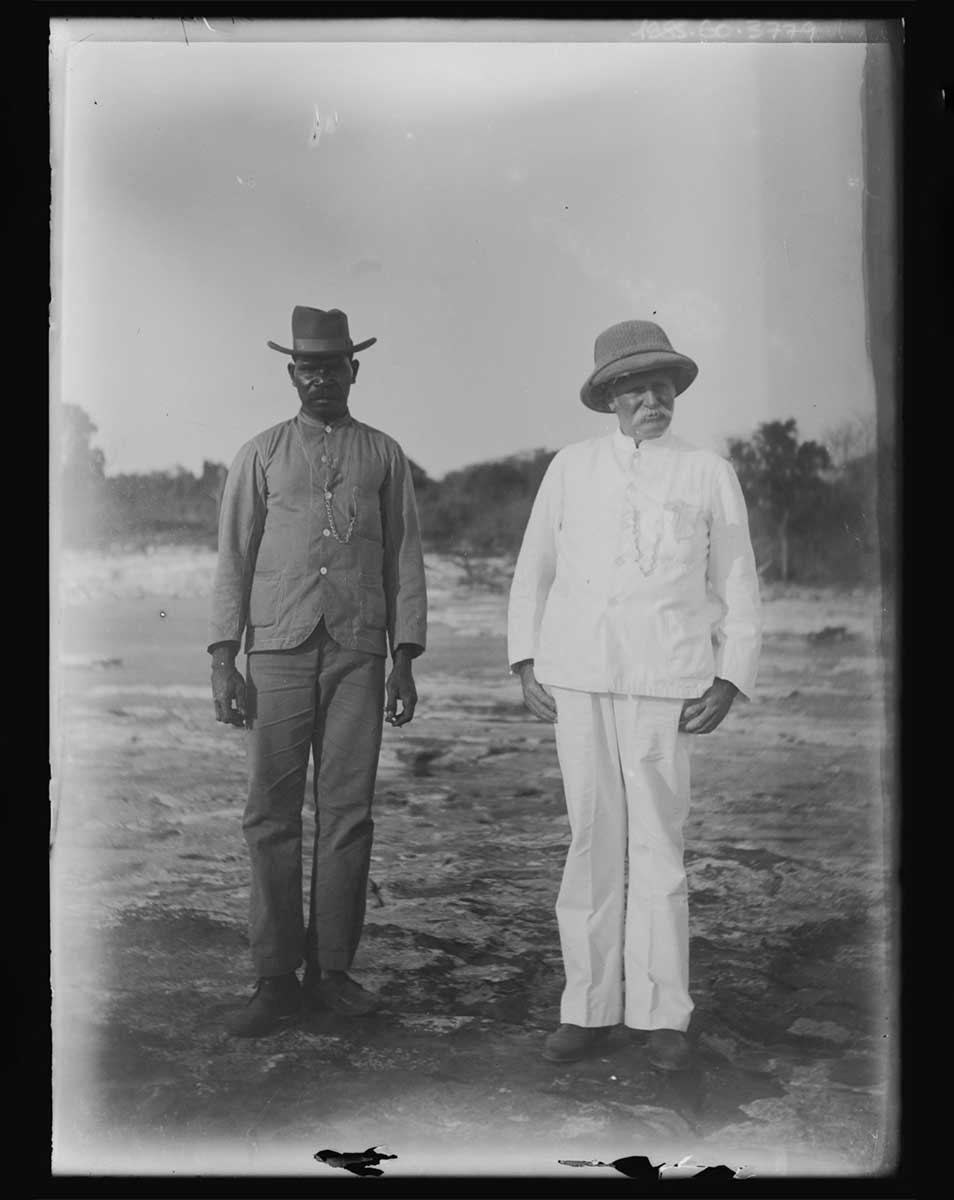Selecting images for our Basedow exhibition
By senior curator David Kaus, 2008
Given that the National Museum's Herbert Basedow collection comprises more than 2,000 images, selecting the photographs for the exhibition was a challenge. Of course, the selection needed to be representative of Basedow’s expedition activities, the people and places he encountered, and his academic interests.
Some were obvious choices, like the portrait of Kai Kai, a Western Arrernte man, that captures the dignity of the old man so well. Another, which shows the buggy from the 1920 expedition being hauled by four camels up a sandhill provides a powerful insight into the difficulties of travelling over trackless country.
A set of four photographs of stock work on Innamincka station are full of action and danger. An image taken at a glacial site is representative of Basedow’s geological activities. Given that Aboriginal cultures were Basedow’s main academic interest, there is a strong Aboriginal presence. But they are not all ethnographic images; many are portraits reflecting the individuality of the subjects.

In some cases one image told a particular story better than others, and sometimes a special image won out. One of my personal favourites shows a group of about 24 Aboriginal people seated on the ground, men and boys in front and women behind, in a place north-west of Uluru.
Taken in 1926, it is not, technically speaking, one of Basedow’s best photographs. It is marred by sun flares and is a bit washed out but, at the same time, it reflects the dignity of people living their way in their own country.
Together with Museum volunteer Edwin Ride, whose expertise in working with historical photographs has been invaluable, I have been able to further document Basedow’s photographs whilst also selecting images for exhibition.
Introduction
This is an edited extract of the ‘Introduction’, A Different Time: The Expedition Photographs of Herbert Basedow, 1903–1928.
- Download Introduction1.1 mb pdf [ PDF | 1.1 mb ]
Digitising the collection

To ensure the highest quality reproductions for the exhibition, the Museum’s photography section has produced high resolution digital copies of the selected images. Negatives provide a higher quality image, so slides were only selected if the Museum does not hold the negative.
The process of digitising the images in the exhibition took several months. Through a digital photographic capture process utilising state of the art equipment, the Museum’s photographers matched the density and colour of each individual glass plate, negative and lantern slide to the original. The need for accuracy and the care in handling the fragile plates and negatives meant that the digitisation of each original took roughly forty-five minutes.
As Basedow’s expeditions covered a period of great technological development in photography, the reprographic process needed to cater for an extensive range of photographic formats and variations in the condition of the originals. This required a flexible approach to the digitisation process, ensuring that the individual features of each photographic image, as well as the idiosyncrasies of the object itself, could be reproduced accurately. The resulting images are a scientific reproduction of the photographic original as an object.
In producing the ‘positive’ images a decision was made to move away from a purely scientific interpretation of the original and focus on creating a photographic print that, while not faithful to the printing process of the period, would reflect the drama, aesthetics and themes that Basedow endeavoured to portray in his travels.

